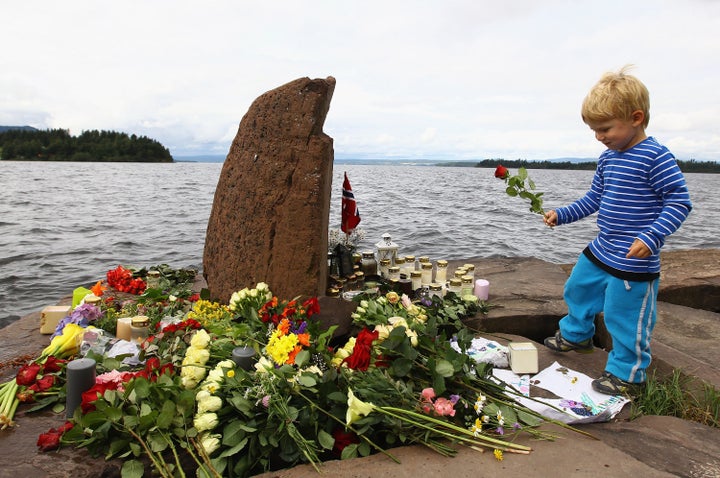
OSLO, July 25 (Reuters) - "Why didn't you come earlier?", survivors screamed when Norwegian police arrived after an hour in which Anders Behring Breivik had wandered the wooded island of Utoeya shooting dead 68 people, most of them teenagers.
In a nation united by grief over the worst massacre in its modern history, few except the survivors quoted by media have criticised authorities for not preventing the attacks or for the speed of their response once they had been carried out.
Already reeling from Breivik's bomb in Oslo, the police response to the island massacre was beset with problems -- from a boat so overloaded with officers it took on water, to special forces without a suitable helicopter to fly them there.
Meanwhile the minutes ticked by and Breivik hunted down his victims who hid under beds, climbed trees and hid in bushes or jumped into the lake in desperate attempts to flee.
It was 5.26 p.m. on Friday when local police in Nordre Buskerud first received an alert about shootings on the island. Four minutes later they notified Oslo and another eight minutes after that they formally requested back-up.
Fourteen minutes later still, local police arrived at the shore of the mainland, but for a further 17 minutes waited for a boat.
"We asked for help from the SWAT team in Oslo, which is specially trained to deal with armed situations. We did not know about the extent of the situation that was out there," North Buskerud police chief Sissel Hammer was quoted as saying by the Dagsavisen daily newspaper.
"But this was not about waiting, this was 17 minutes during which we prepared ourselves."
Meanwhile campers on the lake shore had taken matters into their own hands and set off in boats to pluck survivors from the water, some of them coming under fire from Breivik in the process. One camper alone rescued 40 to 50 terrified people.
ONE POLICE HELICOPTER
At 6.09 p.m., Oslo police arrived in the area and set off for the island on a boat brought from nearby Hoenefoss.
"When so many people and equipment were put into it, the boat started to take on water, so that the motor stopped," said Erik Berga, police operations chief for Buskerud county.
"The boat was way to small and way too poor," he said.
When a SWAT team arrived at the island at 6.25 p.m., Breivik surrendered two minutes later without a fight.
Norwegian police said they are launching a review, but insist they are satisfied with their response.
"You can't expect a better response than that. We are very pleased with that," said police Chief of Staff Johan Fredriksen. "We would do it the same way again unless we were given more resources."
A lack of resources dogged the operation. As well as boats, police lacked a suitable helicopter to transport forces to the island to stop the killer who was bent on highlighting his pet hates of immigration and multi-culturalism.
But state broadcaster NRK got a helicopter in the sky above Utoeya and filmed the gunman before police arrived at the scene.
"We have one helicopter which has very limited flying time," Fredriksen told a news conference.
He rejected the idea that Oslo's small police helicopter could have made a difference, as some media have suggested. That argument, Fredriksen said has "gotten out of all proportion".
In the midst of the confusion, police admit they estimated the number of those killed and counted some victims twice.
At a hastily convened news conference around 4 a.m. on Saturday, police said the death toll at Utoeya was "at least 80". When new bodies were found, they added to that count taking it to 86. Two days later they revised the number of dead to 68.
"It was a demanding task for police officers when they came to the island. They had to prioritise survivors," Norway Police Chief Oeystein Maeland said. "In this situation, a higher number was generated."
"I'm not saying I see any specific issues that I consider worthy of criticism," said Maeland.
"It's a matter of course that, once the acute phase is behind us, and the pressing tasks are solved, it's natural to see how we go through the experiences." (Additional reporting by Henrik Stoelen, Terje Solsvik, Johan Ahlander, Wojciech Moskwa, Alister Doyle and Ole Petter Skonnord)
